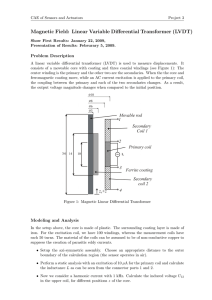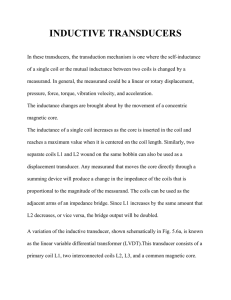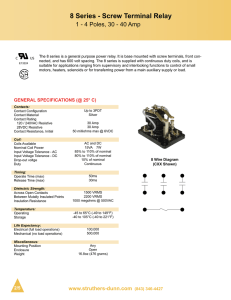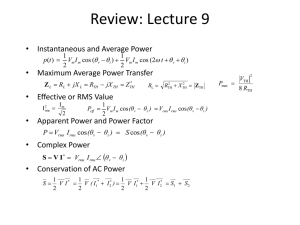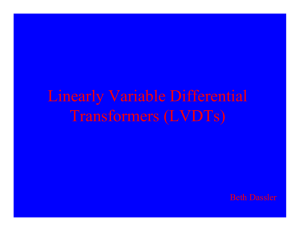Coils Coupling Coefficient: Transformer Analysis
advertisement
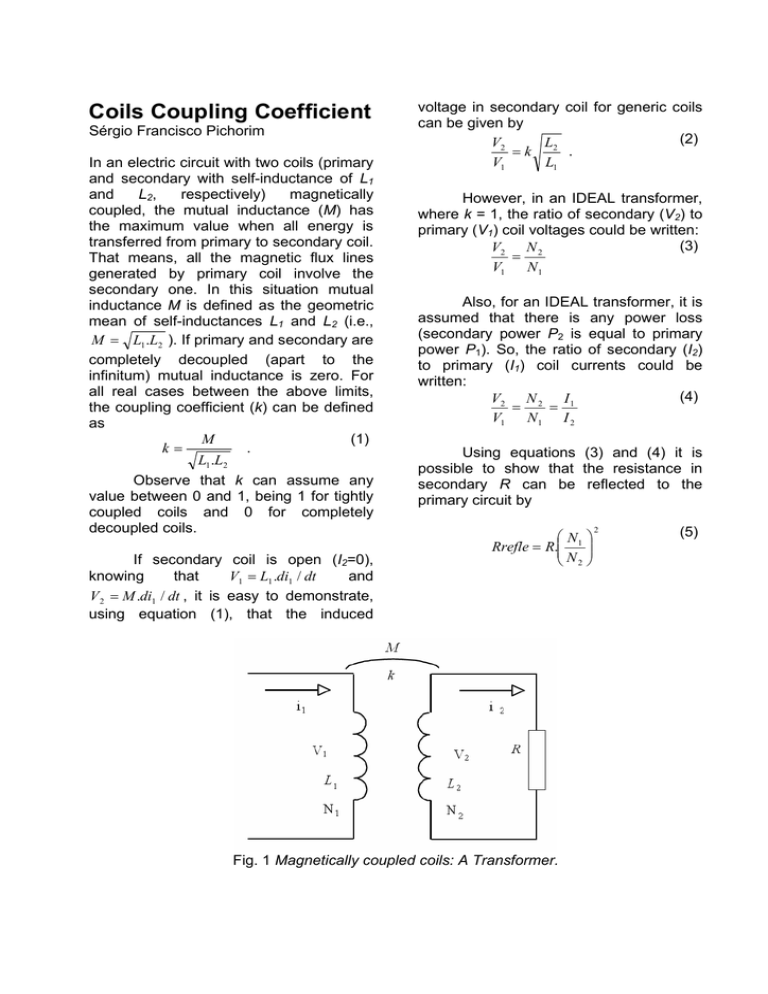
Coils Coupling Coefficient Sérgio Francisco Pichorim In an electric circuit with two coils (primary and secondary with self-inductance of L1 and L2, respectively) magnetically coupled, the mutual inductance (M) has the maximum value when all energy is transferred from primary to secondary coil. That means, all the magnetic flux lines generated by primary coil involve the secondary one. In this situation mutual inductance M is defined as the geometric mean of self-inductances L1 and L2 (i.e., M = L1 .L2 ). If primary and secondary are completely decoupled (apart to the infinitum) mutual inductance is zero. For all real cases between the above limits, the coupling coefficient (k) can be defined as (1) M k= . L1 .L2 Observe that k can assume any value between 0 and 1, being 1 for tightly coupled coils and 0 for completely decoupled coils. If secondary coil is open (I2=0), knowing that V1 = L1 .di1 / dt and V 2 = M .di1 / dt , it is easy to demonstrate, using equation (1), that the induced voltage in secondary coil for generic coils can be given by (2) V2 L =k 2 . V1 L1 However, in an IDEAL transformer, where k = 1, the ratio of secondary (V2) to primary (V1) coil voltages could be written: (3) V2 N 2 = V1 N 1 Also, for an IDEAL transformer, it is assumed that there is any power loss (secondary power P2 is equal to primary power P1). So, the ratio of secondary (I2) to primary (I1) coil currents could be written: (4) V2 N 2 I 1 = = V1 N 1 I 2 Using equations (3) and (4) it is possible to show that the resistance in secondary R can be reflected to the primary circuit by N Rrefle = R. 1 N2 Fig. 1 Magnetically coupled coils: A Transformer. 2 (5)
